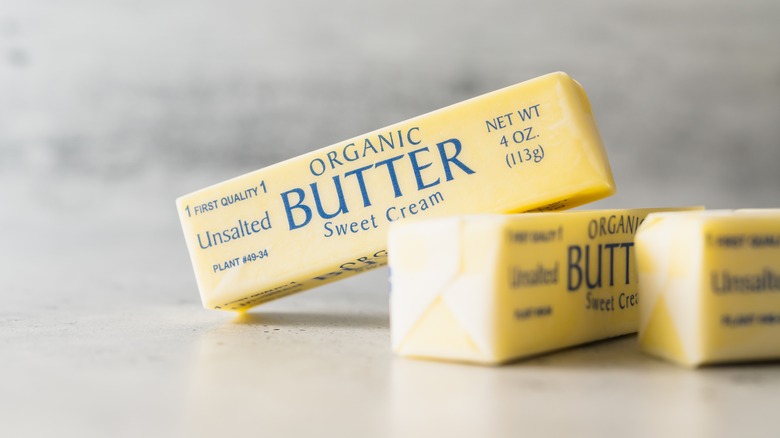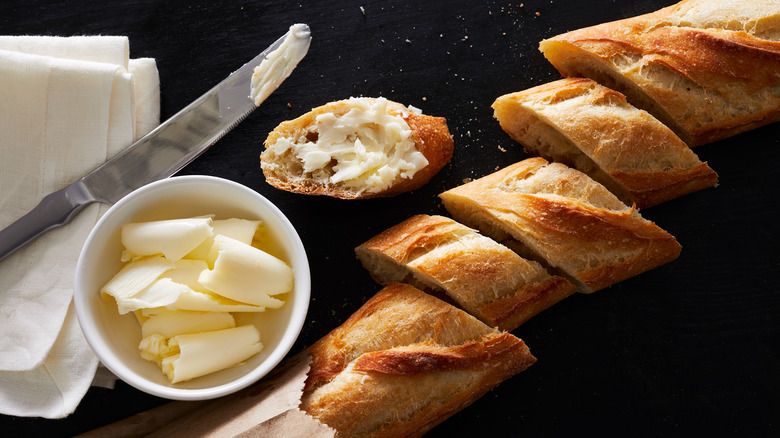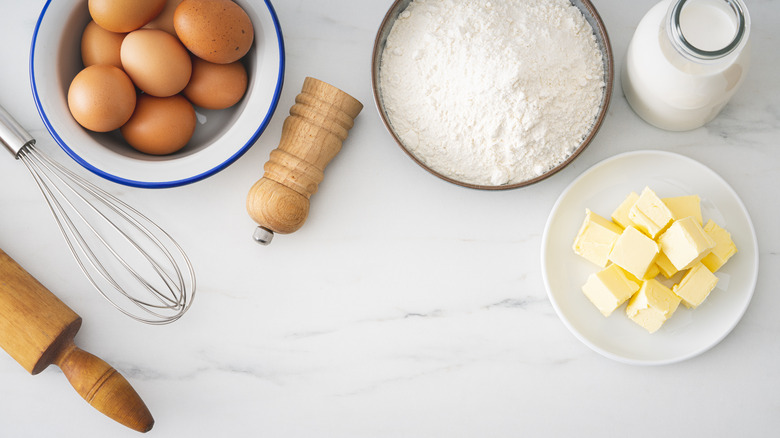What Is Sweet Cream Butter And Is It Actually Different From Standard?
There are more types of butter out there than you might know what to do with. Whether it's America, European, or Irish, cultured or grass-fed, salted or unsalted, it can be hard to remember what makes each type of butter distinct, and how to best use them. On that note, what exactly is the deal with sweet cream butter, a label that's less self-explanatory than some others? Is it sweetened in some way, or creamier than regular butter?
Don't let the fancy label fool you — sweet cream butter isn't especially sweet or creamy. It's simply another term for standard American-style butter. Sweet cream is the most common type of butter you'll find in American grocery stores and kitchens. It's basically an umbrella term that refers to butter that's made from fresh pasteurized cream (rather than cultured cream). It comes in either salted or unsalted varieties, and can be used interchangeably with any other type of butter that's made from fresh cream.
Sweet cream butter versus cultured butter
The most type of popular butter in America, the main trait of sweet cream butter is that it's made with pasteurized fresh cream. "Pasteurized" means that the cream has undergone a heating process to kill off any potentially harmful bacteria, which is a mandate for most dairy products in the U.S. "Fresh" simply means that the cream is used as-is, without being fermented or cultured.
On the other hand, European-style butters are considered cultured butters, made with cultured cream — fresh cream combined with natural, live bacteria and fermented for several hours or days. The cream is then churned, producing a butter that's thicker and more complex. Cultured butter often has a higher butterfat content, which results in a richer flavor, texture, and yellow color.
While sweet cream isn't necessarily sweeter or creamier than other butters, like its name implies, it is milder with a more neutral creamy flavor. Sweet cream butter has an overall mild flavor profile, with fresh or grassy notes, while the live bacteria in cultured butter give it a tangy, sour flavor and a thicker, creamier consistency, similar to yogurt and other fermented dairy products.
How to use sweet cream butter
Sweet cream butter is the default type of butter most commonly called for in many recipes, so unless your recipe calls for European-style butter or another special type, you can likely use sweet cream. Whether it's a recipe with butter front and center or simply used in a supporting role, sweet cream butter will get the job done well. Its mild flavor makes it suitable for both sweet and savory dishes.
The most important consideration is whether the butter is salted or unsalted. If a recipe already contains salt and you use salted butter, you'll want to be wary of how much extra salt is added. With unsalted butter, you tend to have more control over the recipe's salt content. This is especially important in baking recipes, which often call for unsalted butter to avoid throwing the dough or batter's flavor out of whack. In addition to bringing your butter to room temperature, you'll absolutely want to heed your recipe's specification for unsalted butter.
If a recipe calls for cultured butter, you can still use sweet cream butter — just add some buttermilk or sour cream to the recipe concoct your own cultured butter substitute, adding some of that acidity and tangy flavor. Just keep in mind that sweet cream butter will still have a lower butterfat content than European-style products, so it'll be slightly lighter and milder, with less richness overall.



